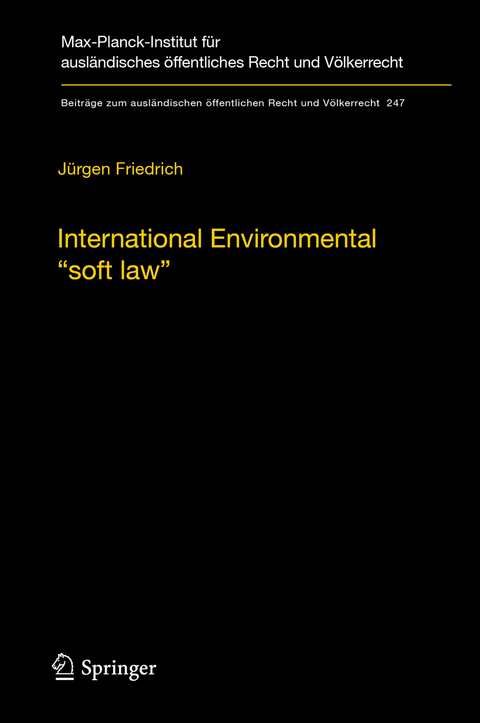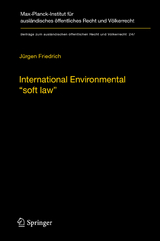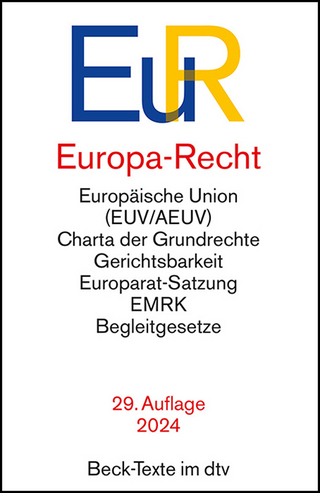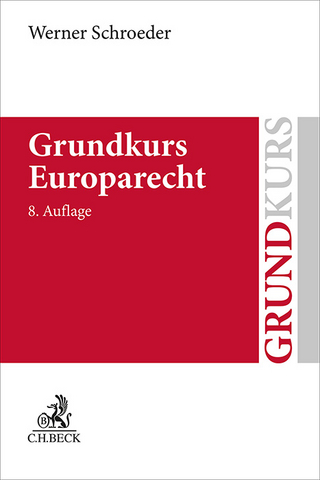International Environmental “soft law”
The Functions and Limits of Nonbinding Instruments in International Environmental Governance and Law
Seiten
2013
|
2013
Springer Berlin (Verlag)
978-3-642-44945-1 (ISBN)
Springer Berlin (Verlag)
978-3-642-44945-1 (ISBN)
This book examines the potential and the limits of nonbinding instruments in the interplay of customary and treaty law as bases for interinstitutional linkages, and as tools to shape the behavior of states and private actors. Offers a variety of case studies.
In international negotiations, the question of the design and the legal form of the negotiated instrument is as complex as it is often controversial. Intended as a read for both practitioners and academics, this book provides a comprehensive treatise of the characteristics, the potential and the limits of nonbinding instruments in international environmental law and governance. An extensive overview and typology of nonbinding instruments as well as several case studies from the areas of fisheries (FAO), hazardous substances (UNEP/FAO) and corporate social responsibility (OECD) provide the material for an in-depth analysis of the role of nonbinding instruments on all levels of governance. The book demonstrates the potential but also highlights the limits of nonbinding instruments in the interplay with customary and treaty law (e.g. UNCLOS, WTO) as bases for interinstitutional linkages and as tools to shape the behaviour of states and private actors. Legitimacy challenges arising from this form of exercise of authority are then discussed in the final chapter, alongside with remedies to address possible concerns.
In international negotiations, the question of the design and the legal form of the negotiated instrument is as complex as it is often controversial. Intended as a read for both practitioners and academics, this book provides a comprehensive treatise of the characteristics, the potential and the limits of nonbinding instruments in international environmental law and governance. An extensive overview and typology of nonbinding instruments as well as several case studies from the areas of fisheries (FAO), hazardous substances (UNEP/FAO) and corporate social responsibility (OECD) provide the material for an in-depth analysis of the role of nonbinding instruments on all levels of governance. The book demonstrates the potential but also highlights the limits of nonbinding instruments in the interplay with customary and treaty law (e.g. UNCLOS, WTO) as bases for interinstitutional linkages and as tools to shape the behaviour of states and private actors. Legitimacy challenges arising from this form of exercise of authority are then discussed in the final chapter, alongside with remedies to address possible concerns.
Part I: Nonbinding instruments in international practice.- Part II: The role and limits of nonbinding instruments.- Part III: The legitimacy of nonbinding instruments.- Part IV: Concluding summary.
| Erscheint lt. Verlag | 11.12.2013 |
|---|---|
| Reihe/Serie | Beiträge zum ausländischen öffentlichen Recht und Völkerrecht |
| Zusatzinfo | XXI, 503 p. |
| Verlagsort | Berlin |
| Sprache | englisch |
| Maße | 155 x 235 mm |
| Gewicht | 144 g |
| Themenwelt | Recht / Steuern ► EU / Internationales Recht |
| Schlagworte | Compliance • Environmental Governance • International Environmental Law • Legally nonbinding instruments • Legitimacy • Nonbinding "soft law" • Non-legally binding instruments • sustainable development • Treaty law |
| ISBN-10 | 3-642-44945-X / 364244945X |
| ISBN-13 | 978-3-642-44945-1 / 9783642449451 |
| Zustand | Neuware |
| Haben Sie eine Frage zum Produkt? |
Mehr entdecken
aus dem Bereich
aus dem Bereich
Vertrag über die Europäische Union, Vertrag über die Arbeitsweise der …
Buch | Softcover (2024)
dtv Verlagsgesellschaft
15,90 €




